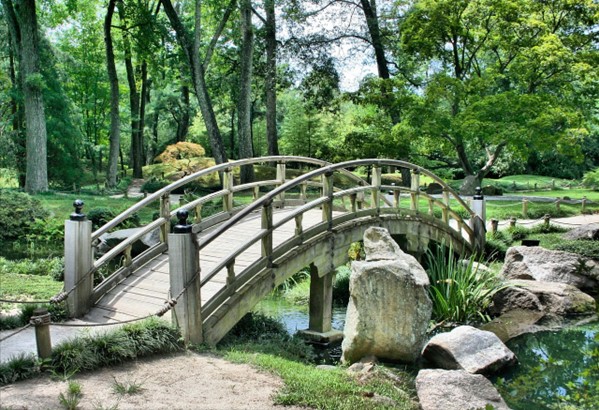Every year on April 22, we celebrate Earth Day, the birth of the modern environmental movement in 1970, when some 20 million people attended inaugural events across the country. This year’s theme is “Invest in Our Planet”—a decidedly more fiduciary-minded approach to protecting our planet. Of course, there’s still plenty of anxiety and stress over climate change, as more scientific studies document extreme weather patterns, natural disasters and rising global temperatures.
But at the same time, another set of expanding research is uncovering something more personal about nature: When people engage more deeply with nature, they experience significant benefits to their health—physically, mentally and emotionally—particularly as they get older. Studies have shown that spending time in nature is a major antidote for stress: It can lower blood pressure and stress hormone levels; enhance immune system function; increase self-esteem; reduce anxiety; and improve mood.
As Richard Louv, a San Diego journalist who is largely credited with triggering the “ecopsychology” movement noted in a recent article published by the Yale School of the Environment: “Nature is not only nice to have, but it’s a have-to-have for physical health and cognitive functioning.”
In retrospect, I’ve known this intuitively from my own experiences as a child who spent a lot of time in the woods. I enjoyed being a young naturalist, learning everything I could about the animals and plants around me in the still rural environs surrounding my suburban Long Island neighborhood. I also can clearly recall the sense of calmness and serenity I felt in nature, a break from the stresses of school and family life. My mind could breathe.
As people get older, the benefits of ecopsychology appear even more important, especially because more than 80 percent of the U.S. population now live in bustling cities and towns. Hence, there’s been an increasing focus on “nearby nature”—urban landscapes, gardens, parks, and any private or public green space. The good news is that even when older people live in urban settings, they can still gain substantial benefits when they engage with nearby nature.
In a 2016 research brief published by Nature Sacred and the TKF foundation (“The Benefits of Nearby Nature in Cities for Older Adults”), authors Kathleen Wolf and Elizabeth Housley, reported that older individuals with access to nearby nature showed increased participation in outdoor physical activities, improved mental health and cognitive function and an increase in social interaction with those around them and their community. (If you want to learn more about Nature Sacred, visit https://naturesacred.org.)
In general, the benefits of access to nature are key ingredients to overall well-being as we age. For example, studies show that older adults who take daily outdoor walks report significantly fewer complaints of pain, sleep and other problems when compared to adults who do not go outside daily. Research also shows that physical activity in green spaces can have a restorative effect, linked to better moods, decreased chance of depression, and improved cognitive function in older adults.
Also, a study of nearly 62 million Medicare beneficiaries found that older adults who lived in a ZIP code with more green space had a lower rate of hospitalization for Parkinson’s disease, Alzheimer’s and related dementias such as vascular dementia and Lewy body dementia.
So how much time does it take for people to say they feel healthier, physically and mentally when they’re engaged in nature? About 120 minutes a week.
That’s according to a recent study of 20,000 people by the European Centre for Environment & Human Health at the University of Exeter, which found that people who spent two hours a week in parks or other natural environments were substantially more likely to report good health and psychological well-being than those who don’t. Those results cut across different ethnic groups, occupations, and people from rich or poor areas, but two hours was a hard line; people who didn’t meet that threshold showed no benefits at all.
Ultimately, engagement with nature may have many health benefits, but it’s not always clear what the exact reasons are—there are probably several of them, both psychological and environmental. Some researchers point out, for instance, that air pollution and traffic noise levels—factors that may contribute to illnesses like Alzheimer’s and Parkinson’s disease—are generally lower in greener environments.
Nevertheless, the major takeaway is that we need to ensure wider and deeper access to nature to counterbalance our daily lifestyle dominated by smartphones and other technology. As society ages, it’s important to provide easy access to nature for older people—and yes, children and younger adults, too. Time spent in nature is beneficial, no matter what the age.
More cities and towns are enhancing parks; schools and other institutions are designing or refurbishing facilities with large windows and access to green space or “blue space”(water environments). Even some healthcare providers are promoting “nature prescriptions.”
One nonprofit organization, for example, Park RX America in Washington, D.C., has established a mission to “decrease the burden of chronic disease, increase health and happiness and foster environmental stewardship by virtue of prescribing Nature during the routine delivery of healthcare by a diverse group of healthcare professionals.” The organization currently includes about 10,000 parks in its “Nature Prescriptions.”
While a walk in the park may keep the doctor away, there are many other creative ways to bring nature into our lives, as you can learn on my 45 Forward podcast on April 10 with Rebecca Wildbear.
Rebecca is the creator of a yoga practice called Wild Yoga, which links “the healing practice of yoga — strength, flexibility, relaxation, presence — with reverence for nature.” Wild Yoga, she says, is designed to help individuals “create a personal practice that stretches their awareness and awakens their connection to the place we all most deeply belong to: the Earth.”
—Ron Roel


